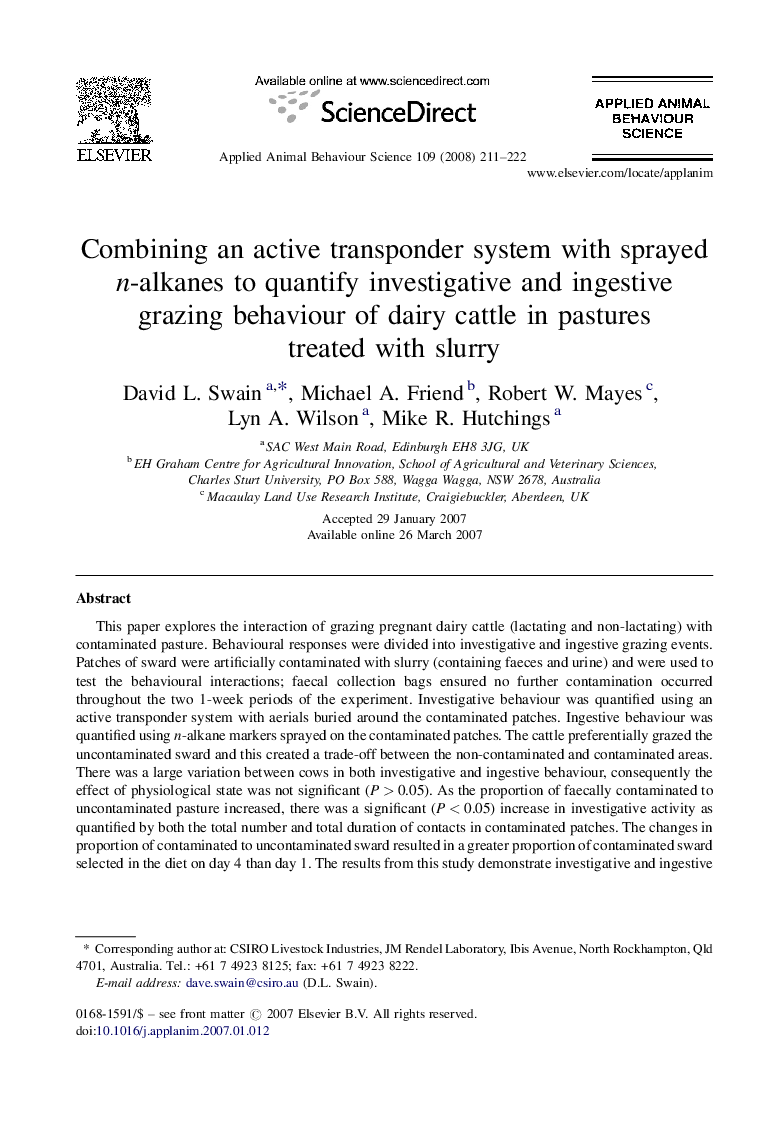| Article ID | Journal | Published Year | Pages | File Type |
|---|---|---|---|---|
| 6379764 | Applied Animal Behaviour Science | 2008 | 12 Pages |
Abstract
This paper explores the interaction of grazing pregnant dairy cattle (lactating and non-lactating) with contaminated pasture. Behavioural responses were divided into investigative and ingestive grazing events. Patches of sward were artificially contaminated with slurry (containing faeces and urine) and were used to test the behavioural interactions; faecal collection bags ensured no further contamination occurred throughout the two 1-week periods of the experiment. Investigative behaviour was quantified using an active transponder system with aerials buried around the contaminated patches. Ingestive behaviour was quantified using n-alkane markers sprayed on the contaminated patches. The cattle preferentially grazed the uncontaminated sward and this created a trade-off between the non-contaminated and contaminated areas. There was a large variation between cows in both investigative and ingestive behaviour, consequently the effect of physiological state was not significant (PÂ >Â 0.05). As the proportion of faecally contaminated to uncontaminated pasture increased, there was a significant (PÂ <Â 0.05) increase in investigative activity as quantified by both the total number and total duration of contacts in contaminated patches. The changes in proportion of contaminated to uncontaminated sward resulted in a greater proportion of contaminated sward selected in the diet on day 4 than day 1. The results from this study demonstrate investigative and ingestive behaviour can be reliably quantified by combining an active transponder system with sprayed n-alkanes, thus providing a useful tool for future studies.
Related Topics
Life Sciences
Agricultural and Biological Sciences
Animal Science and Zoology
Authors
David L. Swain, Michael A. Friend, Robert W. Mayes, Lyn A. Wilson, Mike R. Hutchings,
